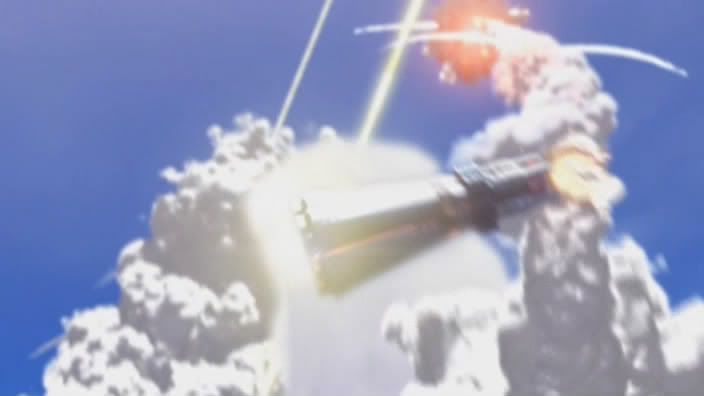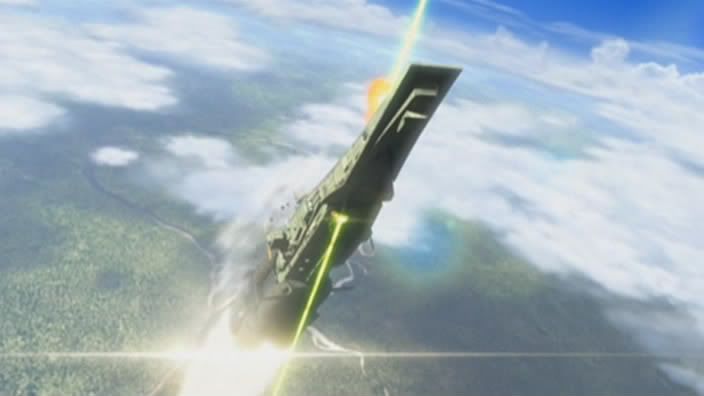This is the second time I'm writing this post so forgive me for being a bit brief or missing some things.
Ford Prefect wrote:Longer ranged weapons? Based on what? The only range figure that has been provided for Battletech is heavy naval PPCs with 'hundreds of kilometres', compared to Gundam having on-screen warship engagement ranges of thousands of kilometres. This is setting aside stuff like Colony mounted beam weapons that can hit targets at tens of thousands of kilometres.
We don't know what the effective ranges of Battletech weapons would be against something with as little acceleration as UC Gundam Warships seem to have. Battletech Naval weapons should start being able to hit mobile suits at 1000km. Naval lasers and/or weapons bays using bracket firing would be more accurate.
Standard scale weapons start becoming effective against maneuvering targets at 450km (UAC-2, LBX-2, ER-LL), 360km (UAC-5, ER-PPC, LPL, Gauss Rifle, LRMs), 216km (UAC-20, ER-ML, SSRMs), and 108km (Machine Gun, SRMs, ER-SL), 18km (maximum effective range of mech or tank targeting computer if you stick one on the hull), some range less than 18km ie zero range (artillery weapons and light rifled cannon). Balistic weapons obviously keep going after that, they just aren’t fast enough to be effective.
Strangely enough, someone was actually desperate enough to alter or design a tank specifically to strap to the hull of a ship even though by the rules the tank could only reach 18km. Maybe the had a patch in to the ships targeting computer or they pulled the targeting system out of a crashed aerospace fighter.
Anyway, I think this 'move in at half the speed of light' thing is hilarious. Even if we accept that somehow the Clanners will do this (which they won't because there's no basis for it),
I suggested that strategy before I had any decent numbers on Gundam Warship acceleration or Delta-V. It simply isn't necessary. I was thinking that 5 day number might be wrong or have involved stops or something. With this new information, vague as it is, it seems clear that regular high velocities gained from traveling in from the jump point would be more than enough to perform this sort of attack if it is even opted for instead of long range bombardment.
Even standard combat at relatively similar speeds seems quite doable given the low acceleration and Delta-V of Gundam warships. Unless UC Gundam ship launched nukes have far greater performance than seems likely.
they aren't moving fast enough to be uninterceptable. They're only moving at half the speed of light, they'll know they coming weeks, if not months away.
This is why I suggested they cut engines long before reaching the target and coming in on a vector that should have far fewer sensors. There is also reaction time to consider. To late to do anything about it is much farther away at high velocity than at low velocity. Reaction time can be a bitch in these sorts of situations.
At which point they can work out their likely trajectory and just throw junk in their way and watch as the Clanners self-destruct. Newton works both ways: clouds of empty tuna tins will ruin them.
As you say it works both ways. Warships have plenty of cargo capacity for tens of thousands of tons of ball bearings.
There is also the possibility of coming in on a line that doesn't quite intersect the Earth Sphere and just launching missiles and firing balistic weapons with much less accuracy. This would of course be supplemented by a hard tactical burn at a 90 degree angle to let them get just that much closer while still not actually getting close enough to be shot at. This would also help to dodge debris fields set up on their projected course at least some what.
Destructionator XIII wrote:Doesn't make it any better. A Lagrange point is where the forces of gravity add together not to cancel out, but to give a force that allows a third object to stay stationary to the second. The gravity is still there.
If it consistently worked on gravity, if it works at a Lagrange point, it should work anywhere in Earth's orbital path too.
I'd say we don't really know enough about how it works.

I was just pointing out I remembered it only usually working at the Earth Sun L1 point so no one would get the idea it worked at always worked at any Lagrange point. Of course that's pretty vague to, so who really knows.
Yeah, I looked at it, but that's inconclusive to acceleration too.
True, but combined with other data points it should give at least a vague idea of acceleration. Now we just need to find an example of a warship thrusting for a little while and not running out of fuel.
That franchise never ceases to impress me with its adherence to hard science in the details.
No argument there. I've always been a fan of the Island Three O'Neill colonies in Gundam. The one Island Three in Battletech was practically built on a lark and destroyed by Amaris. Priorities get strange when it's cheaper to ship ore 300 light years than to mine your own systems asteroid belt. As a result the only sizable belter community in Battletech is in the Sol system. I would have liked to see more space development as jumpship numbers dropped, but the capability to do that decreased with jumpship numbers.
Anything hitting that fast will explode. They're for much slower speed impacts, but see
Whipple Shields for an example.
Well, there goes the effectiveness of the .5c bullets. The colony's mirrors will act as a whipple shield.[/quote] There is a reason Whipple Shields have multiple spaced layers even just for small hypersonic attacks. There's going to be some degridation with the one layer, but it really needs to be spaced much further out to be useful if it's only one layer. The mirror isn't a km off the Colony is it? What I'd think would happen is the explosion would start at the mirror and then keep going and hit the colony so fast there would only be a small degradation. Like what would happen if the slat armor on an apc was much to close or a Whipple Shield only had one layer. ie after thinking about it both of the things you said are probably right.


